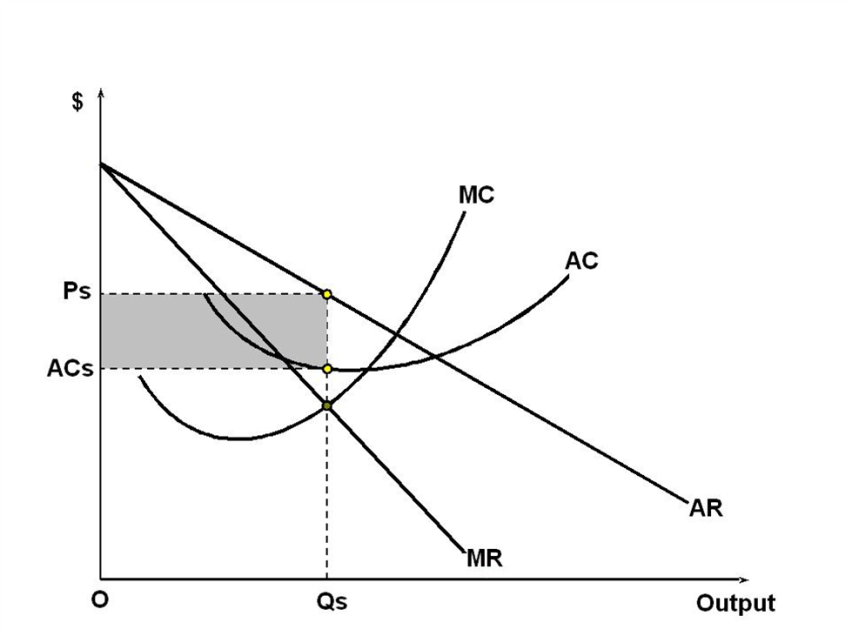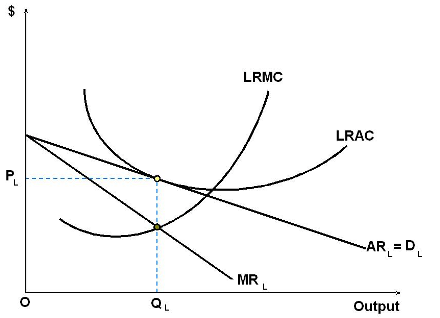What Are the Characteristics of Monopolistic Competition?
Industries that have monopolistic competition offer products that exist somewhere between a monopoly and perfect competition. They can generally be characterized by:
● The presence of many companies
● Similar but differentiated products
● Free entry and exit into the industry
● Highly elastic demand curves
● Some degree over the price they can set for their products.
Businesses within a monopolistic competition will often operate independently from one another behaving as if their product is the best or only one in the market. They will also attempt to communicate this belief to consumers through aggressive advertising campaigns and grooming a following.
However, because these companies are not truly monopolies, they must be sensitive about the perception of their product and the price they charge. If the product appears too similar to another or exceeds a price point that consumers feel is beyond the value they will receive, then there is a high likelihood that they will switch to a competitor’s product.
How Does Monopolistic Competition Work?
Monopolistic competition can best be described in the short term using the following diagram.

The image above begins with a typical price vs quantity graph from economics. The downward-sloping line to the right represents the demand in the market or average revenue (AR) that can be expected as the price goes up or down. For this same product, there also exists a corresponding marginal revenue (MR) that's exclusive to the company which can be represented by the downward-sloping line to the left.
To determine the price that a company should select for this product, they need to know two more key pieces of information:
● Marginal cost (MC) - The cost is how much it takes for the company to offer the product. This is represented by a curved line that crosses both the marginal revenue and average revenue lines.
● Average cost (AC) - The average incremental cost that it takes to produce the product. This will also be represented by a curved line that may also cross both the marginal revenue and average revenue lines.
When overlaid on top of one another, business analysts can draw a vertical line Qs at the intersection of MR = MC. This line continues upward and eventually stops at the AR line. This becomes the price Ps that the company should charge for the product.
Before reaching the AR line, vertical line Qs will also cross the AC line. It's in this difference between the AR line and AC curve that the company expects to maximize profits (shown by the grey shaded box).
However, because this monopoly is imperfect, it does not last forever. Other competitors can also enter the market offering similar products and services.
Therefore, in the long run, the slope of the demand curve shifts causing the marginal revenue curve to also shift. This can be depicted as follows:

As the slope of the AR and MR lines shifted, the price that the company commands has gone down. This reduces margins to the point where it is no longer profitable or even feasible to compete in the market. This is typically when the business may decide to exit or discontinue its product in favor of a new one with better margins.
Example of Monopolistic Competition
A classic example of monopolistic competition is technology giant Apple’s iPhone. When the iPhone was first launched back in 2007, it was certainly not the only mobile phone or even the first touch-screen phone. However, Apple did an amazing job marketing the product so that it appeared to be differentiated and better than the competition. As a result, they were able to command a high price and generated hefty earnings in the short run.
However, as time went on, other mobile phone manufacturers decided they too wanted a share of this market. Many other tech giants such as Google and Samsung decided they would offer similar but different products. In the long run, this increased competition has taken away Apple customers and made it difficult for any company to exceed certain price expectations for a mobile phone. This has cut into Apple’s margins and made the iPhone not as profitable as it once was originally.
Of course, Apple still continues to offer the iPhone today and revamps it with a newer and better version every two years or so. While it is still a mobile phone at its core, the new features give the perception to customers that it is differentiated enough from the competition and even the previous iPhones that they must buy a new one. Hence, monopolistic competition is still very prevalent within the mobile phone market.
Other Examples
There are plenty of other examples of industries that have monopolistic competition:
● Automobiles: Ford vs General Motors
● Fast Food: Mcdonald's vs Burger King
● Soft drinks: Coke vs Pepsi
● Coffee: Starbucks vs Dunkin Donuts
● Clothing: H&M vs Forever 21
● Streaming Services: Netflix vs Disney+
In each circumstance, a handful of companies stand out as the industry leaders. Through strategic product offerings, marketing, and pricing, consumers may believe that one is better than the other. However, in the general sense, they offer a very similar type of product.
The Bottom Line
Businesses with similar products that are differentiated enough to stand out are those that have monopolistic competition. In the short run, a company may command a monopolistic lead over the others and enjoy maximum profits. However, in the long run, other competitors are free to enter the market, steal customers, and decrease the company's margins.
Consumers may have a tendency for a particular product, but they are also free to choose other substitutes if they believe they are better or the price becomes too great. Therefore, these companies exist somewhere between a monopoly and perfect competition.
